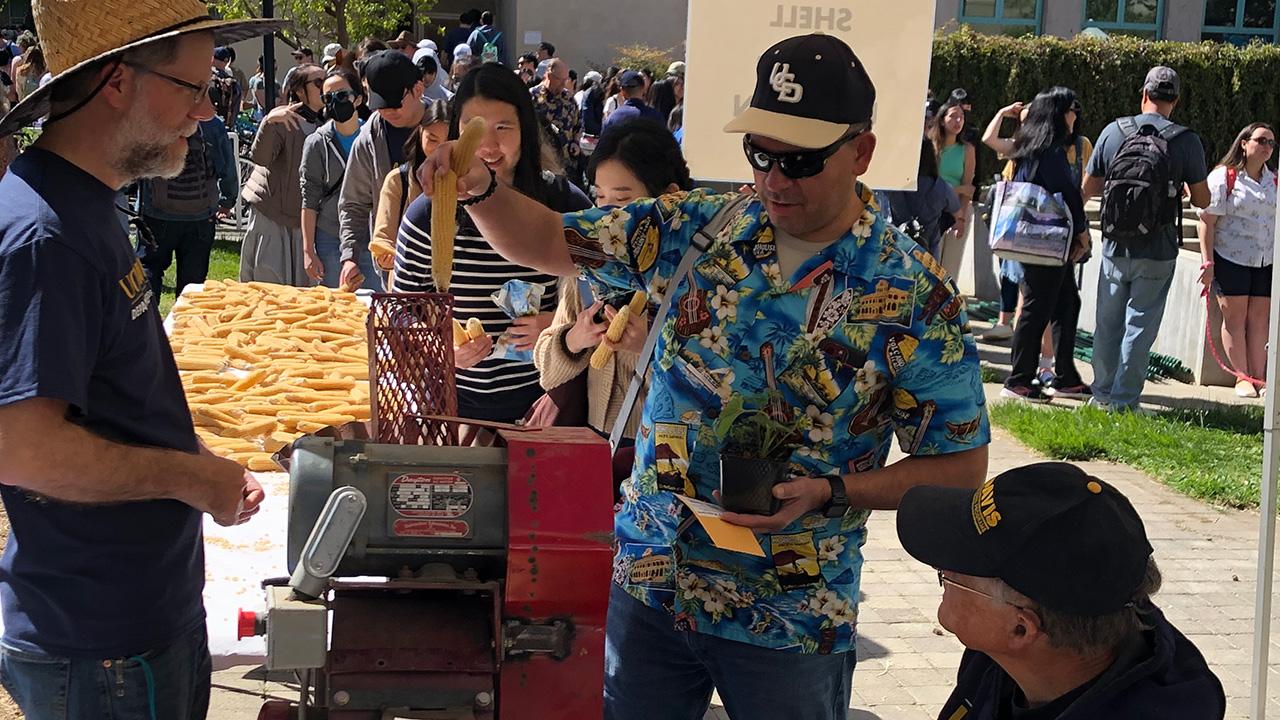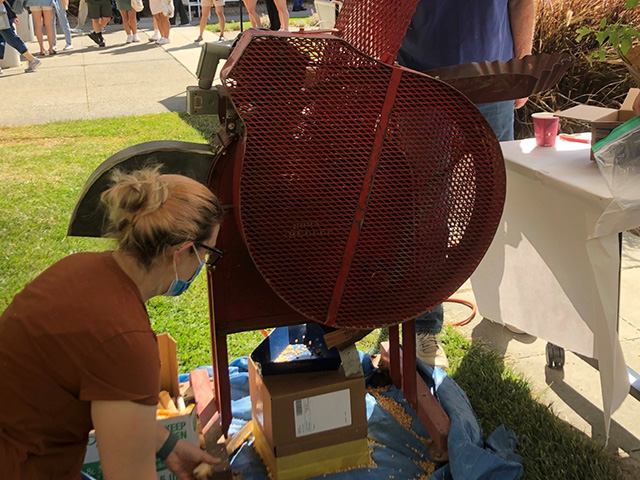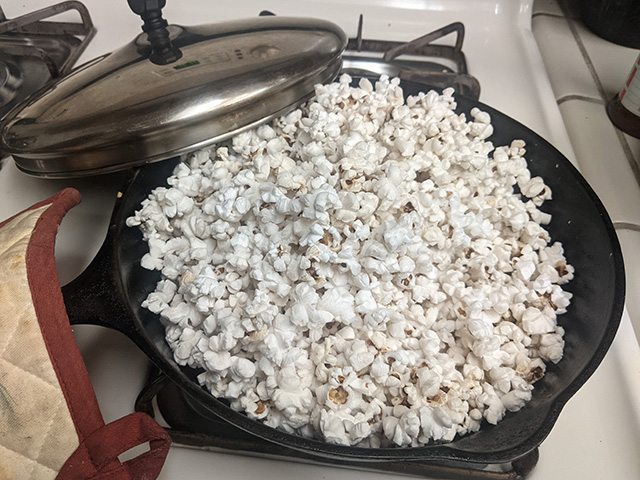
You can pop corn grown on campus lands
The secret? A little water inside
Quick Summary
- Try this recipe for popping your own popcorn - it's fun and easy!

Each spring, crews with the UC Davis Department of Plant Science plant popping corn on campus farmland west of campus, then harvest it in the fall. The next spring, that same corn shows up for one of the most popular exhibits during Picnic Day: the corn shelling machine, in front of the Plant and Environmental Sciences building.
Visitors grab a few ears of this special corn and toss them down a shaft. Two mighty wheels break the kernels off the cobs and spit the cobs out one chute. Down a second chute clatter the kernels, which are scooped into a bag for folks to take home.
Then what??? This next part is even more fun – be sure to include the kids!
Popping popcorn the old-fashioned way
This method takes a little longer than sticking a store-bought bag into the microwave, but it gives you delicious results every time. Adapted from Elsie Bauer’s SimplyRecipes.com.
Before you start, clean your popping corn by picking out tiny bits of cob and underdeveloped kernels. Put what's left in a sieve and rinse it in running water to wash off any chaff or dust.
Ingredients:
1-2 tablespoons neutral-flavor oil
About 1/3 cup popcorn kernels – just enough to barely cover the bottom of the pan. If you have less, that's OK, but don't overfill the pan.

Salt to taste
Instructions:
1. Use a heavy skillet with a lid. Cast iron works great, if you have it. Heat it on medium heat, and add your oil. When the skillet seems warm, move it to let the oil flow all around the bottom, then toss in 3 or 4 kernels.
2. When these first kernels pop, take the skillet off the heat, remove the kernels with a spoon, and add the rest of the corn. Shake the skillet around so all the kernels evenly cover the bottom. The kernels should just barely cover the bottom of the skillet. Don’t add too many, or they’ll pop out all over the place!
3. Count 30 seconds, then return the skillet to the heat.
4. While holding the lid, gently shake the skillet back and forth across the heat source. Keep shaking gently so the kernels don't burn! You'll do this for at least a minute or two, so be patient.
5. Finally, the kernels will start to pop. Hold the lid a little askew so steam can escape – this keeps the popcorn from getting tough. Keep shaking!
6. When the popping slows to several seconds between pops, remove the skillet from the heat and pour into a large bowl.
You can sprinkle the popcorn with salt, toss with melted butter or use other toppings such as seasoned salt, garlic salt, curry powder, chili seasoning, cayenne pepper or grated Parmesan cheese.
Enjoy!
What makes it pop?
Popping corn is different from other kinds of dry corn, such as that ground into cornmeal: It has a little bit of water inside!
"As the kernel heats up, the water expands, building pressure against the hard starch surface. Eventually, this outer layer gives way, causing the popcorn to explode," the United States Department of Agriculture explains. "As it explodes, the soft starch inside the popcorn becomes inflated and bursts, turning the kernel inside out."
To preserve that moisture, store your popping corn in a sealed bag with the air squeezed out.
Thank you, Jim Hill!
For many years, our popcorn shelling exhibit has been hosted by Professor Emeritus Jim Hill, a UC Extension specialist and associate dean for international programs at the College of Agricultural and Environmental Sciences.
We hope you had a great visit during Picnic Day! We look forward to seeing you next year!
Media Resources
- Trina Kleist, UC Davis Department of Plant Sciences, tkleist@ucdavis.edu, (530) 754-6148 or (530) 601-6846
